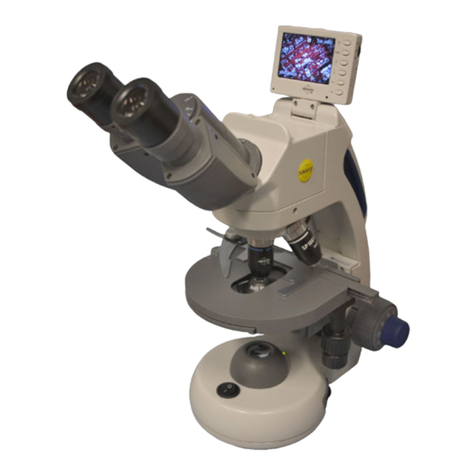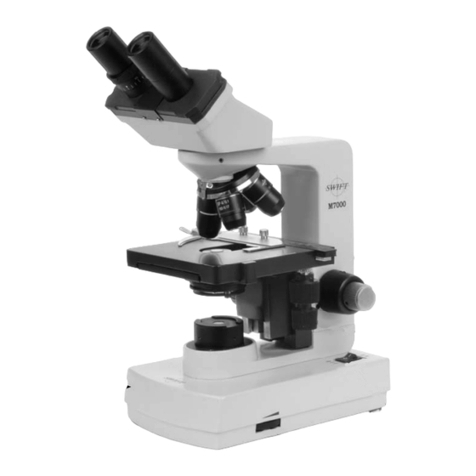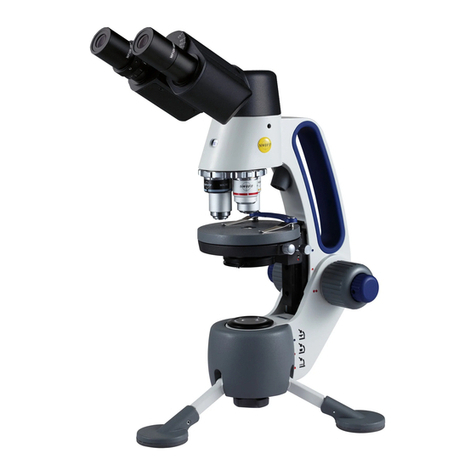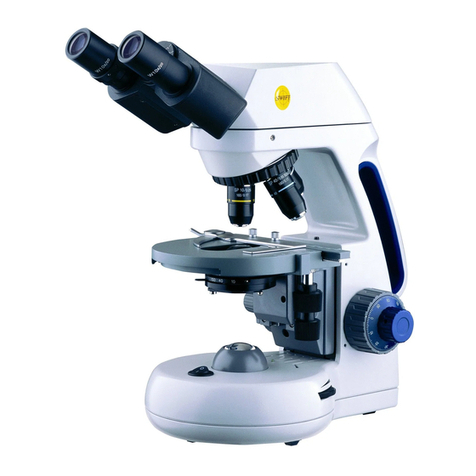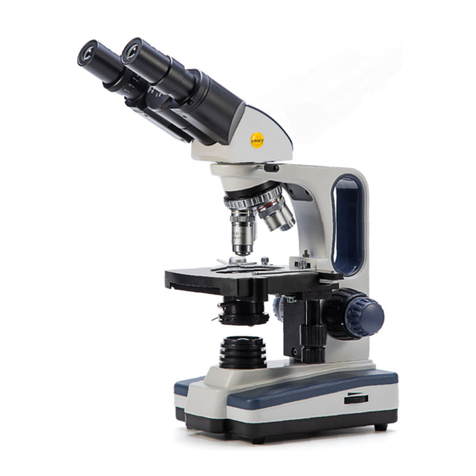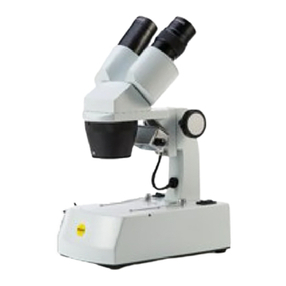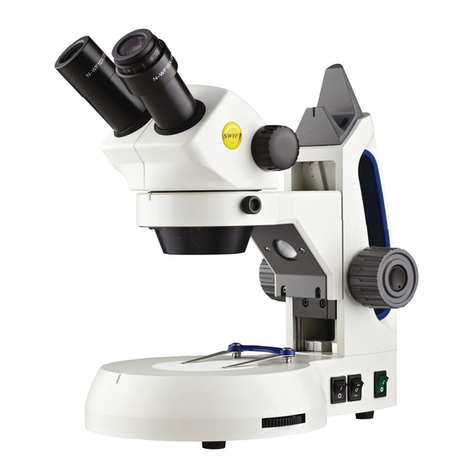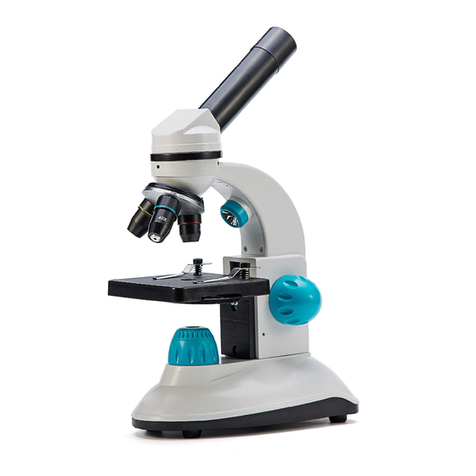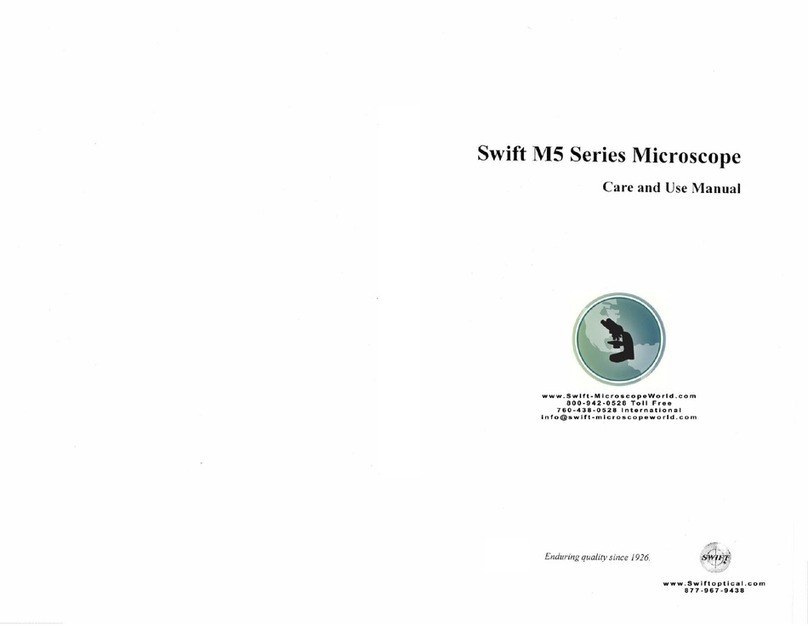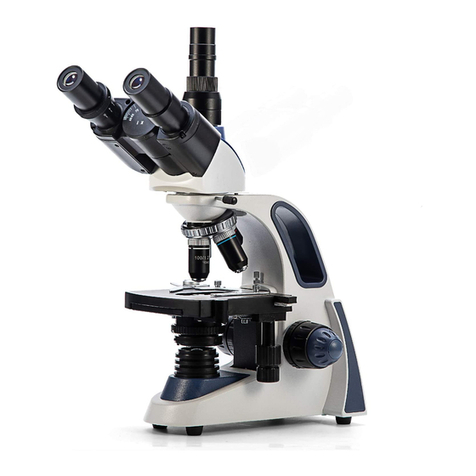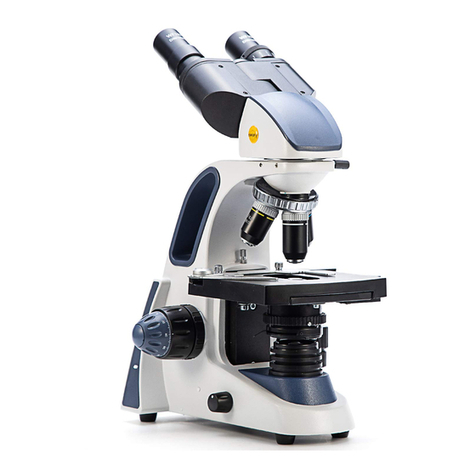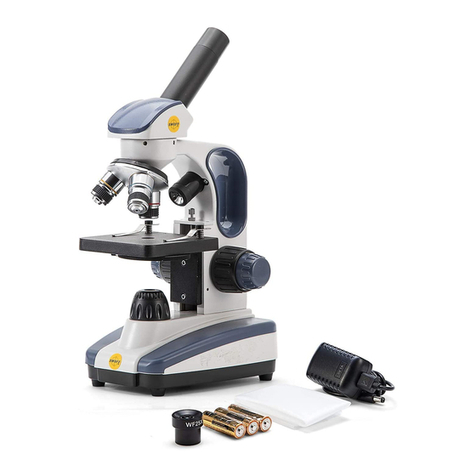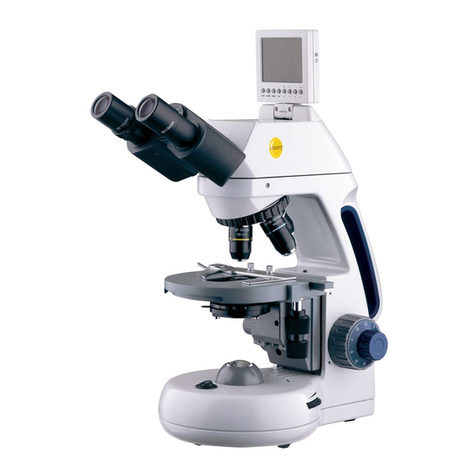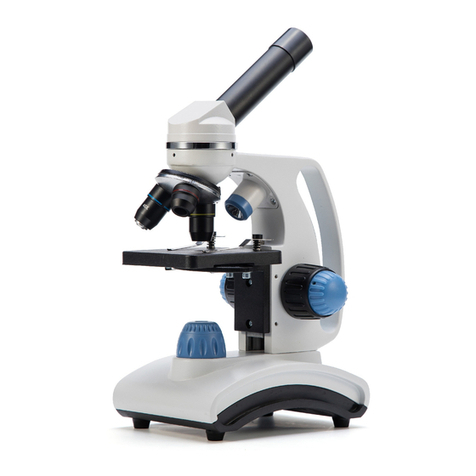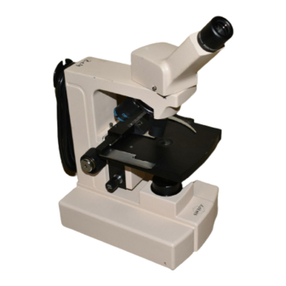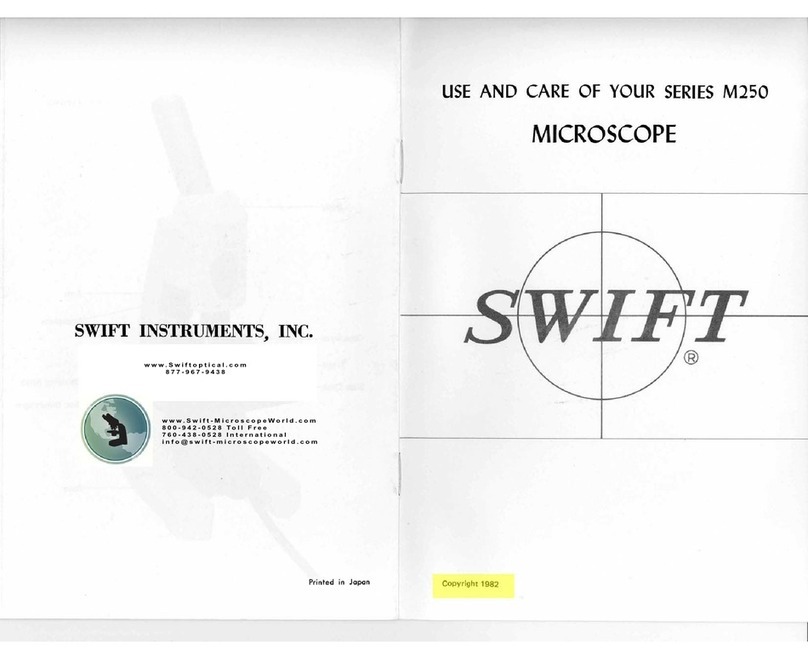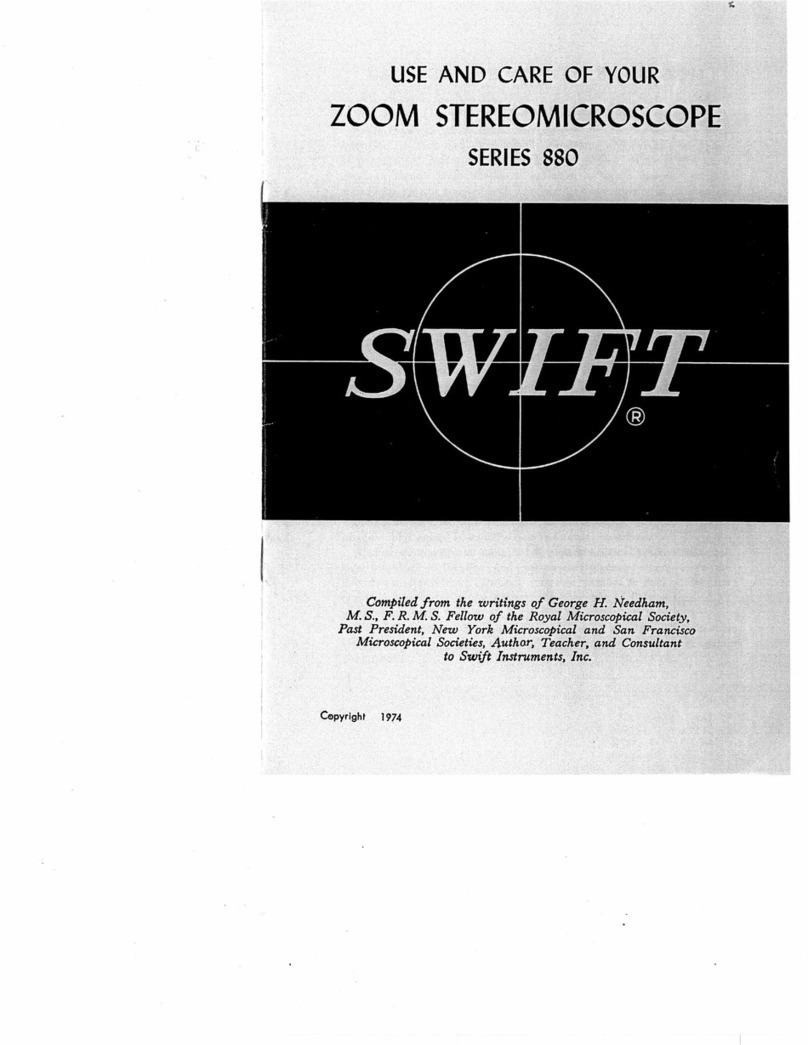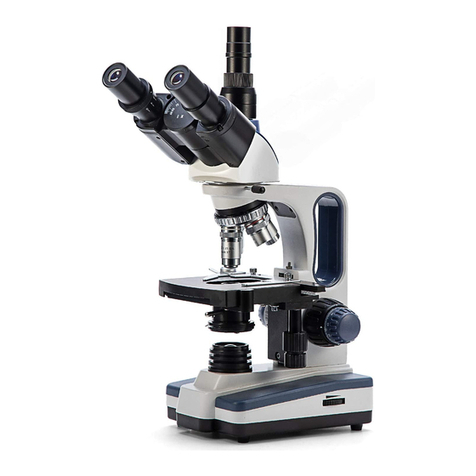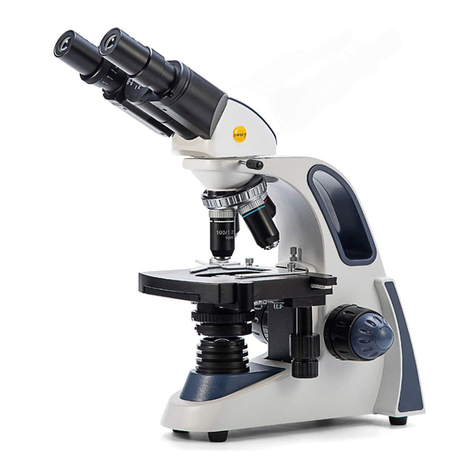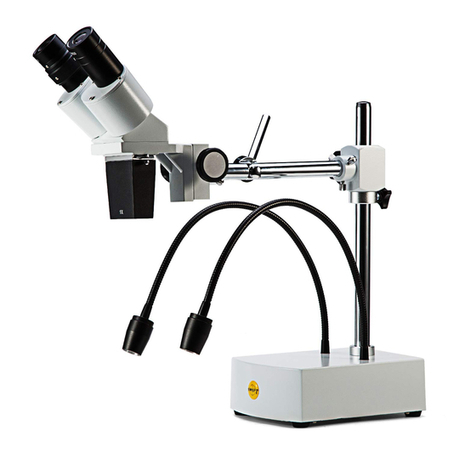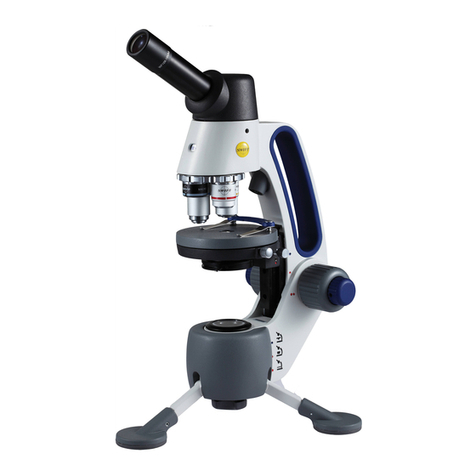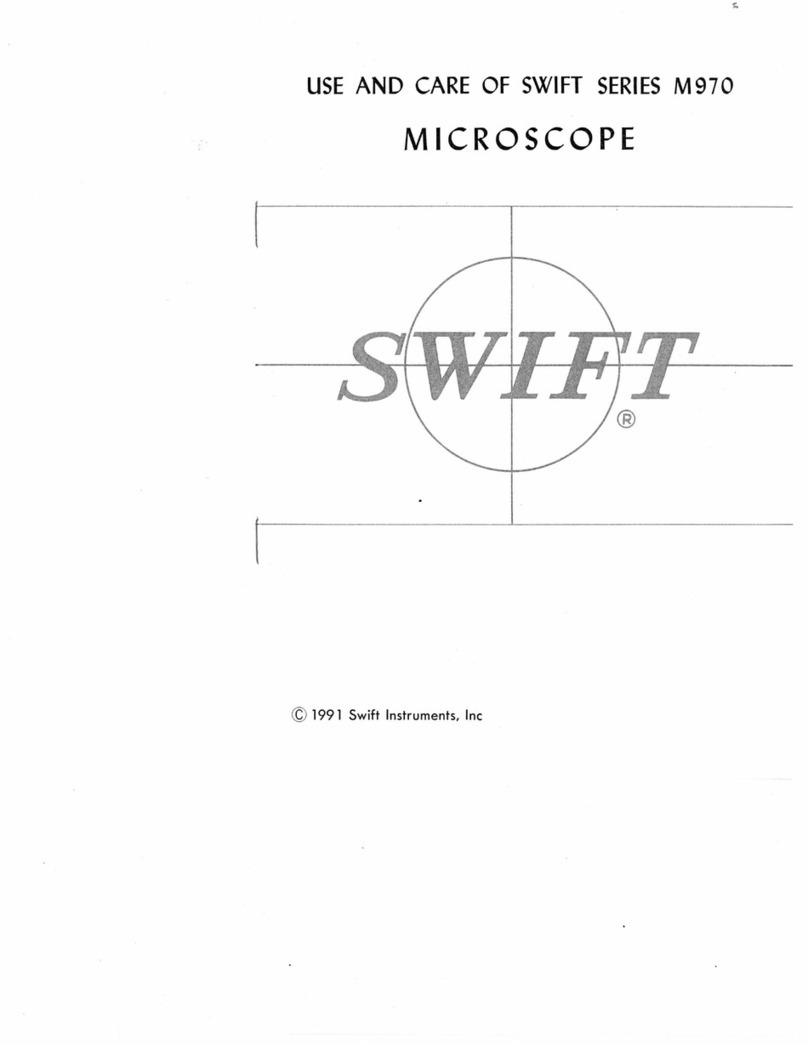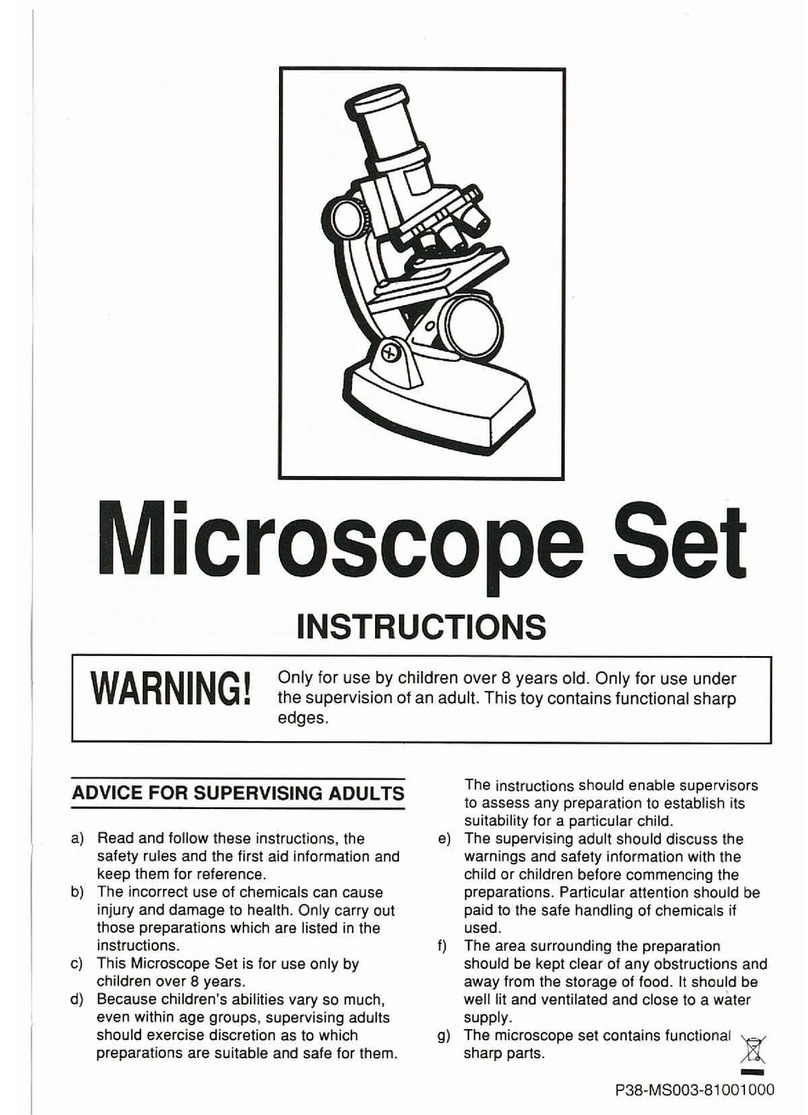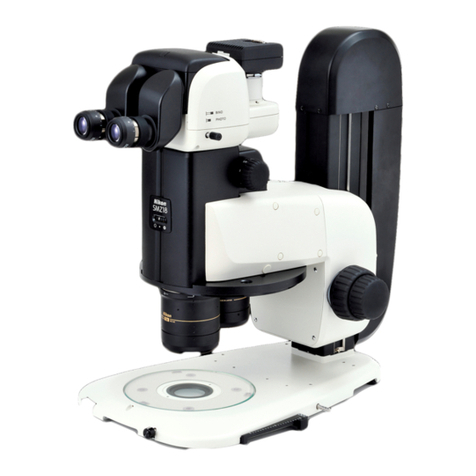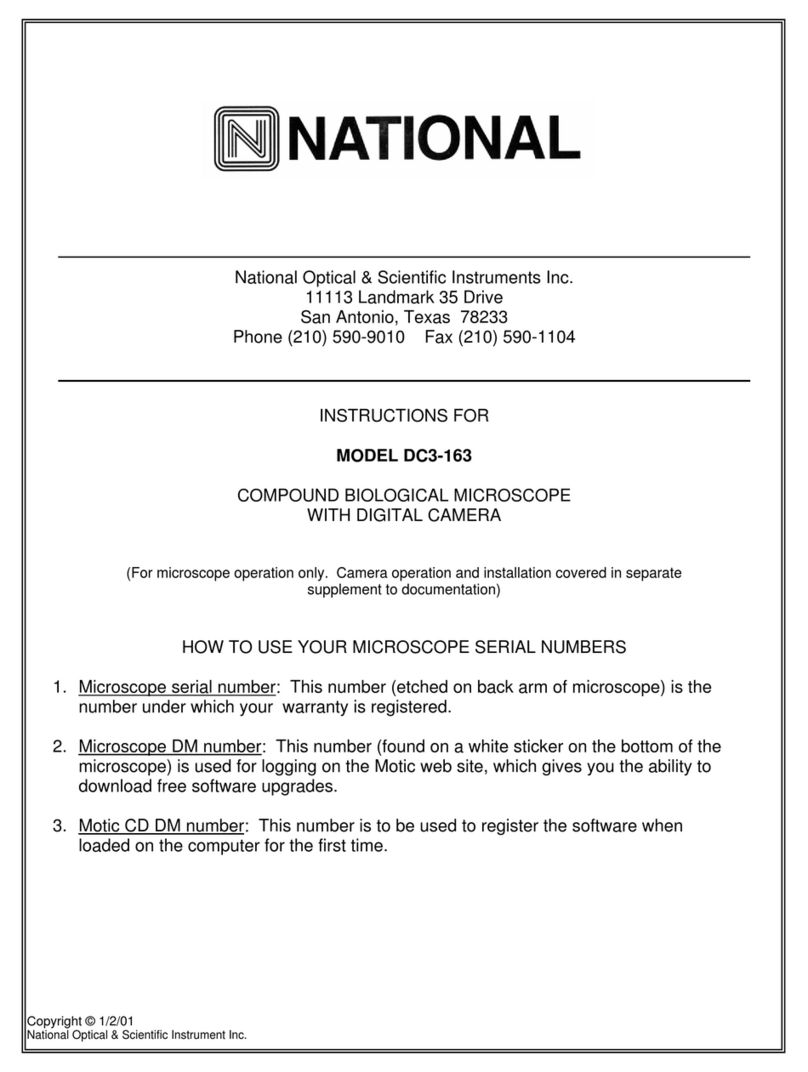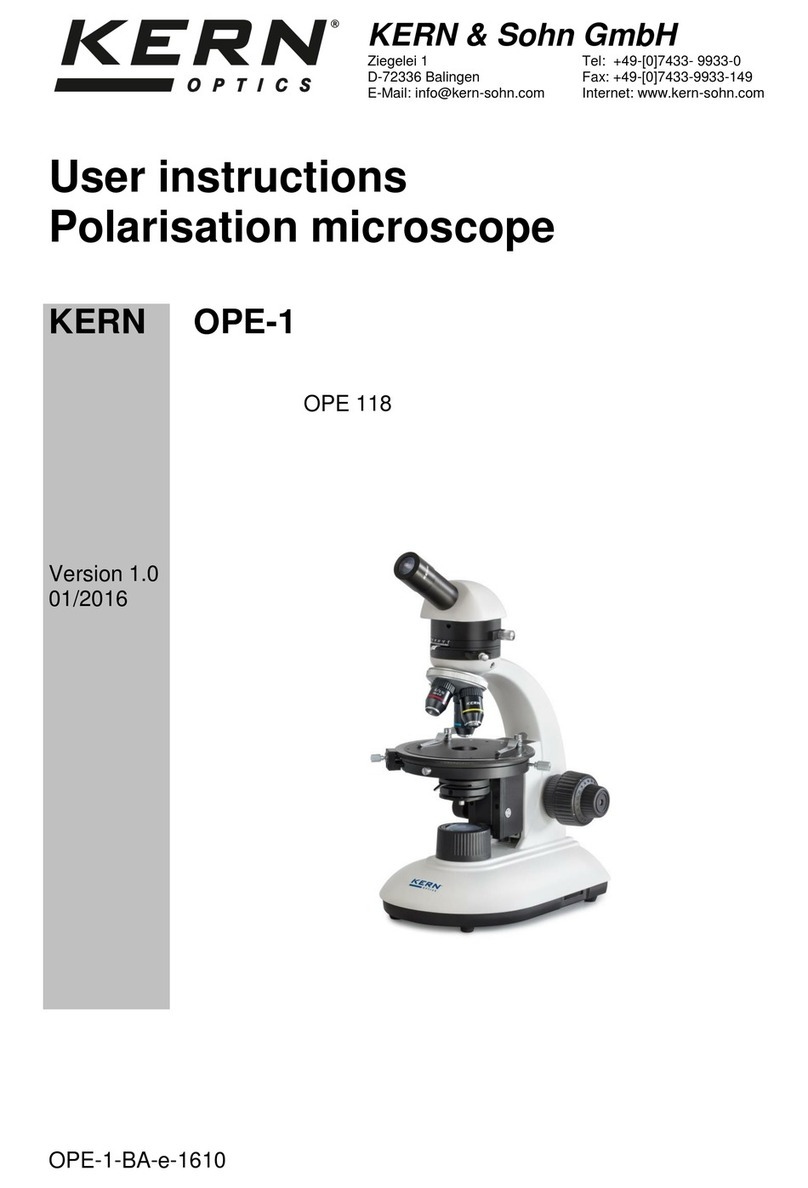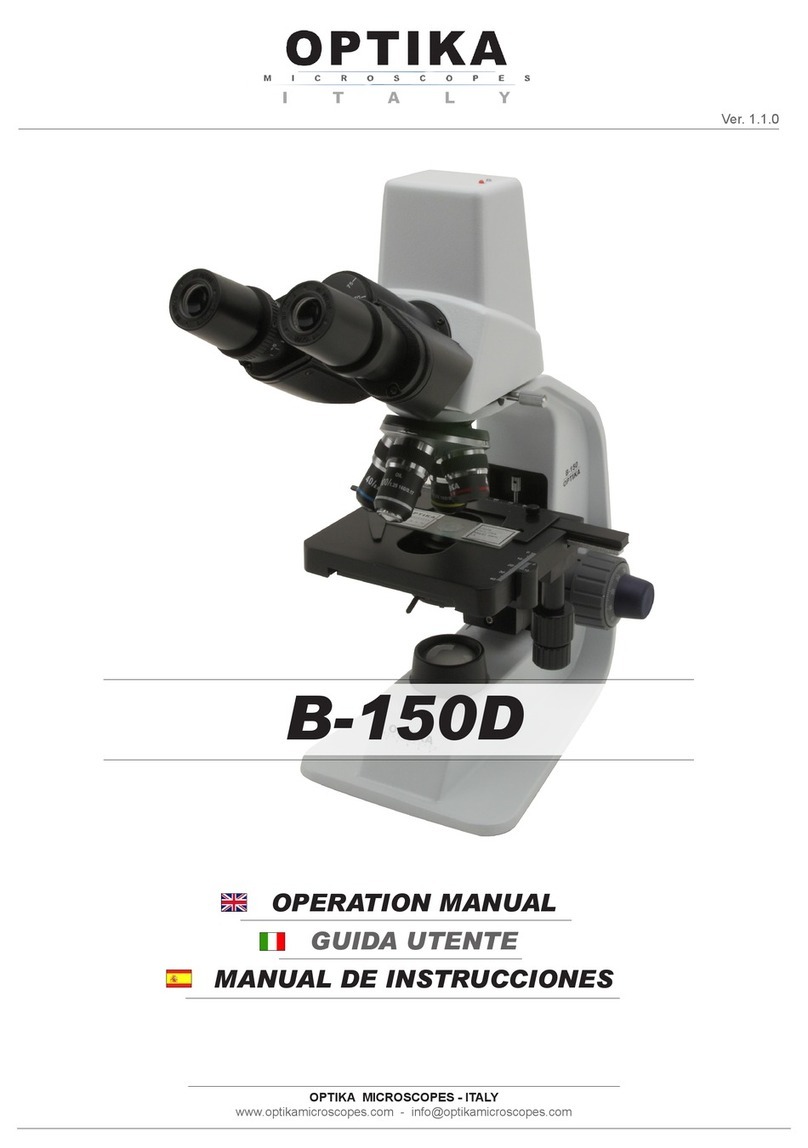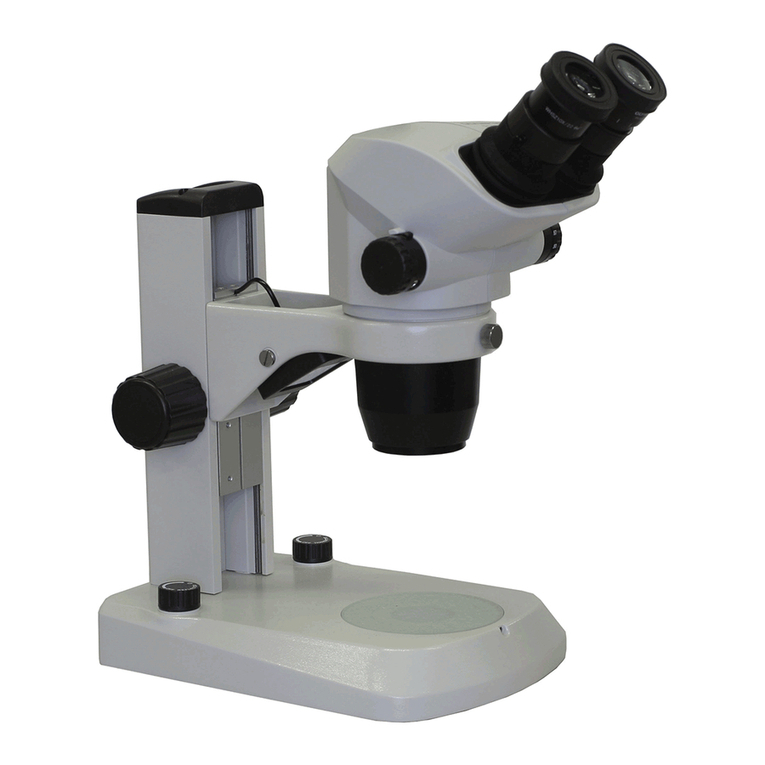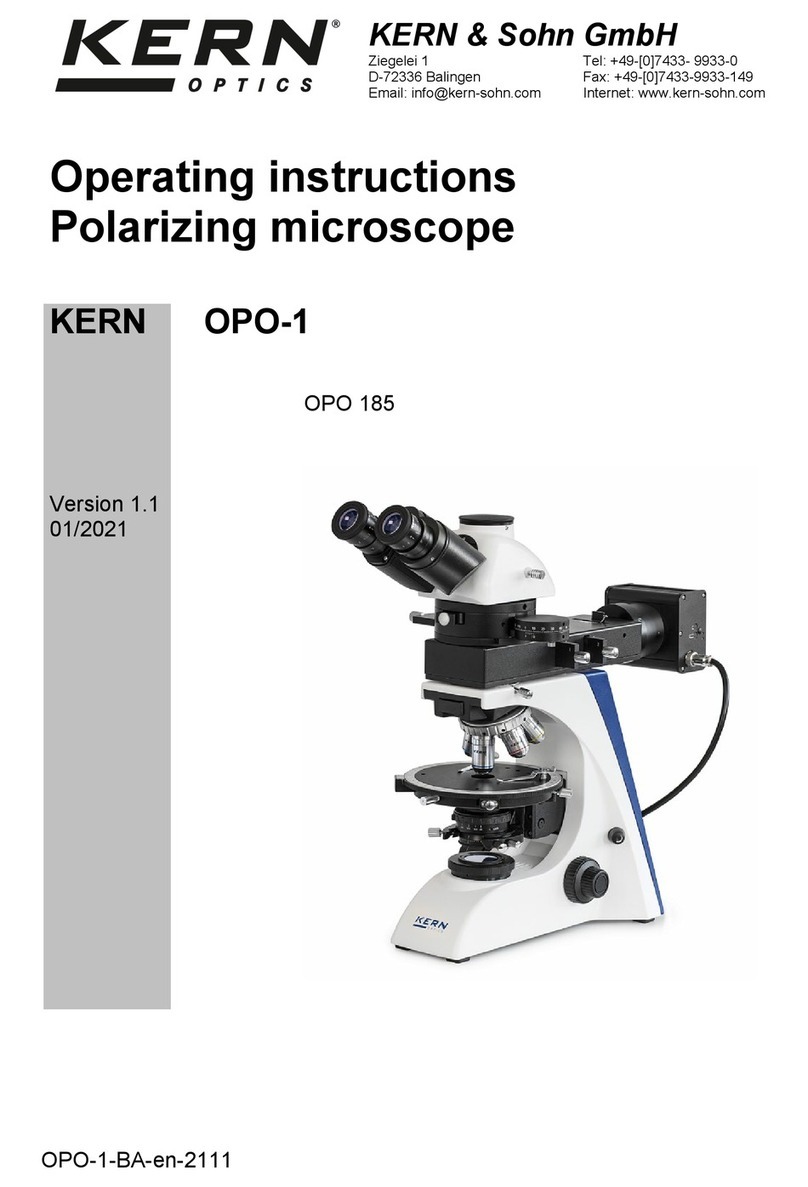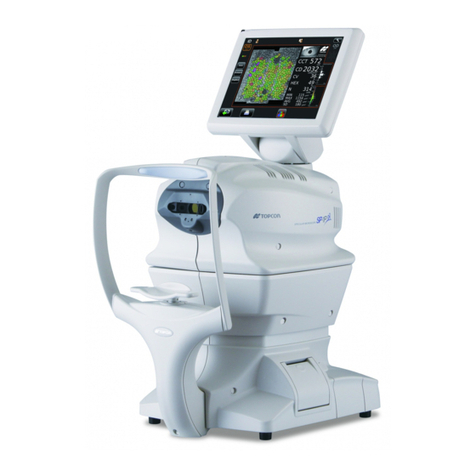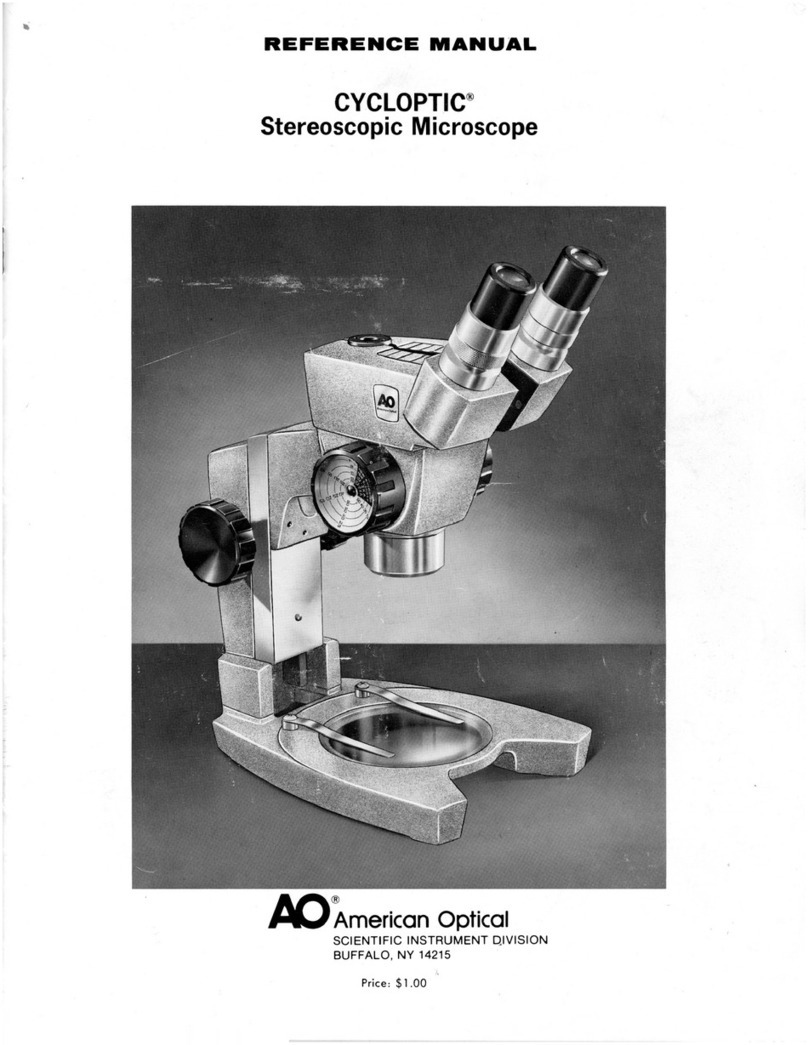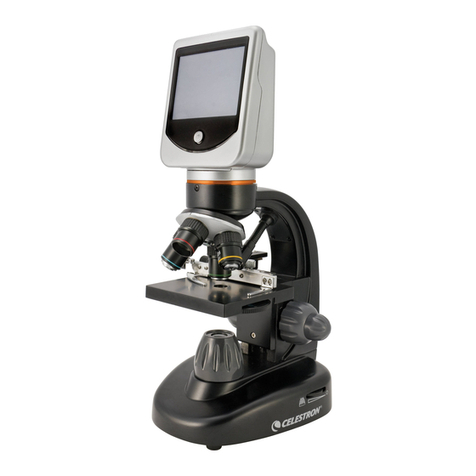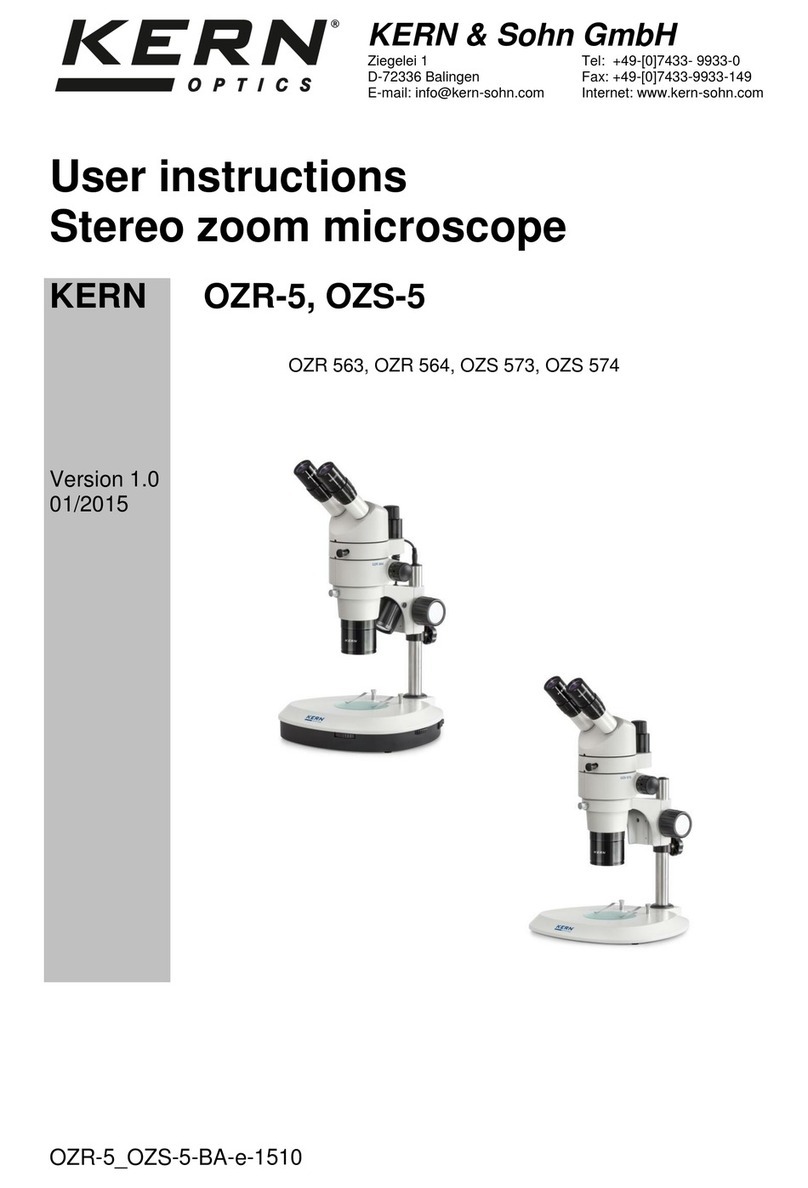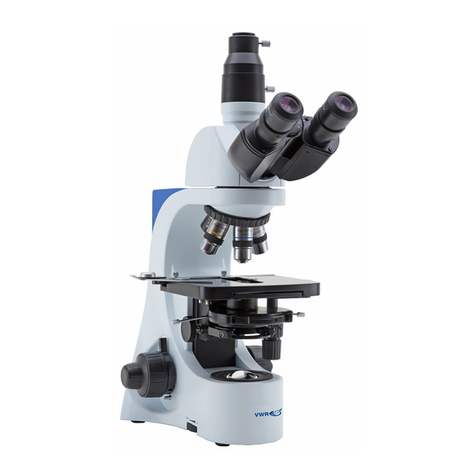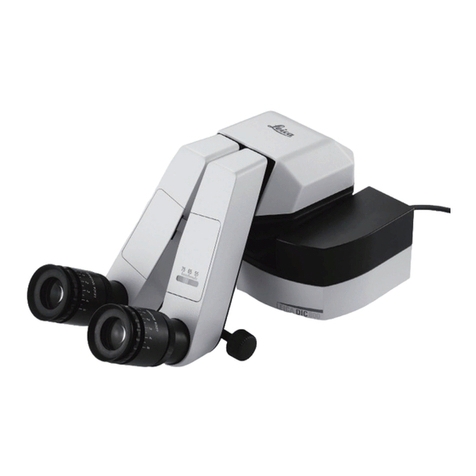9
SERVICE
Use and store your instrument in a dry environment. When not in
use, microscopes should be stored with dust covers in place and
illuminators turned off. Avoid direct sunlight, high temperatures,
moisture, smoke, and fungus.
Your Swift stereo microscope is designed to function satisfactorily
with only ordinary maintenance. The instrument should be
periodically serviced by a qualified, authorized service technician,
who will clean, re-lubricate and perform routine adjustments.
Unauthorized personnel should never disassemble lens assemblies or
other precision components. For information regarding service,
contact your local authorized Swift dealer or Swift customer service
at (877) 967-9458.
BULB REPLACEMENT
Unplug the stereo microscope from the electrical outlet and
remove specimens from the stage before you attempt to replace
a LED. To prolong the life of the LED, you should always turn off the
unit when not in use.
The top illuminator bulb is Swift #MA14778, 3W, 5500K LED bulb.
The top bulb may be replaced by carefully laying your microscope
on its back so that the top light is facing up. Unscrew the top light
cover to expose the LED bulb assembly. Carefully remove the LED
condenser lens to gain access to the two Philips screws holding LED
bulb down, and remove them. Approximately 1” below the LED
bulb assembly on the outside of the top light barrel are three
1.27mm hex head set screws. Loosen all three set screws and
detach the LED wiring harness within the barrel. Remove the old
LED bulb assembly, attach the new LED bulb assembly and assemble
in the reverse.
The transmitted (bottom) illumination bulb is Swift #MA14778, 3W,
5500K LED bulb. The bottom bulb may be replaced by carefully
laying your stereoscope on its side and using a Phillips screw driver
remove the four screws securing the rubber feet and base plate to
illuminator base. Remove three 3mm Phillips head screws securing
lamp housing to lamp bracket; then remove lamp housing. Using a
5.5mm hex nut driver, remove two nuts securing the 3W LED lamp
assembly. Carefully unplug LED lamp connector (attached to LED
socket located on circuit board). Replace LED lamp assembly and
then, reverse the above process.
